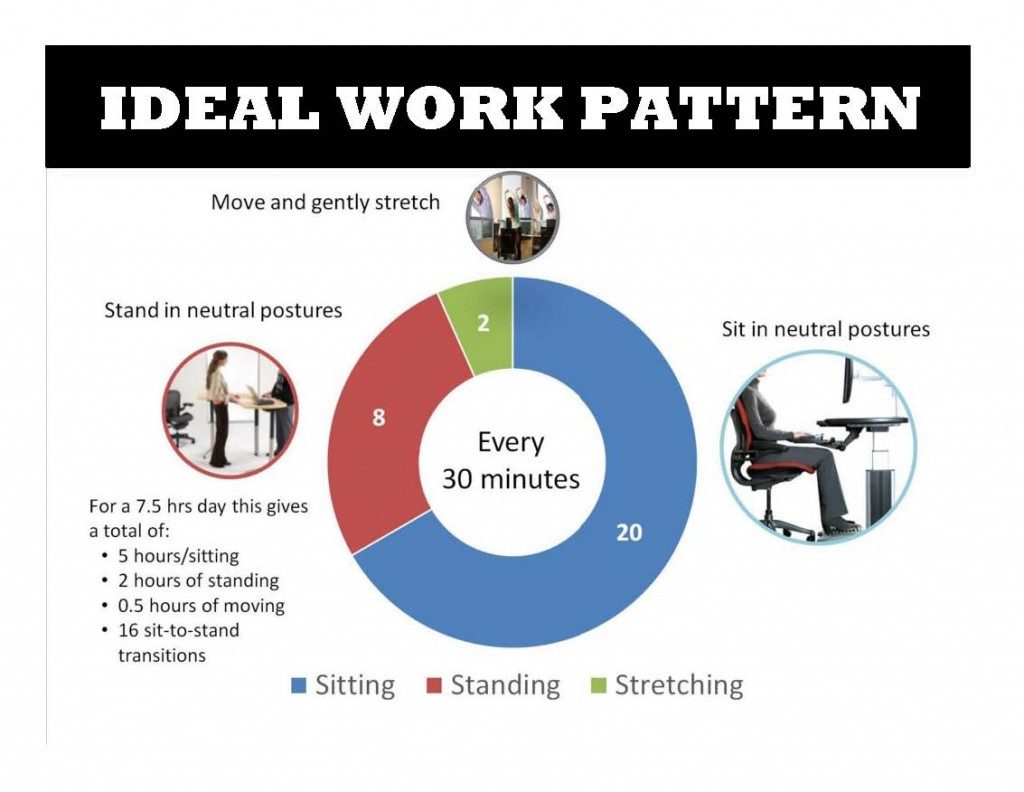No one will stand all day when they have the opportunity to sit. This is because the body works harder when standing than when sitting. However, work production studies indicate that workers are more efficient when they stand to work. So how do you decide between the two? Consider these general guidelines.
When Standing is preferred:
- the task cannot be performed with arms kept comfortably by your sides.
- assembling, testing, or repairing larger products (i.e., greater than 6 inches high)
- the work area is too large to be comfortably reached when seated. Stand when you must reach more than 15” past the front edge of the workstation. The maximum reach envelope when standing is significantly larger than the corresponding reach envelope when sitting for both men and women (Sengupta & Das, 2000).
- you work in more than one workspace to perform job duties and must move around frequently.
- the work task lasts less than 5 minutes.
- dealing with heavy objects weighting more than 10 pounds. In general, more strength can be exerted while standing (Mital & Faard, 1990) Stand when you need to maximize grip forces (Catovic, Catovic, Kraljevic & Muftic, 1991) or complete static or dynamic lifts (Yates, & Karwowksi, 1992). The work surface does not allow the worker to comfortably position legs under the surface because of an obstruction (i.e. working on a conveyor or a progressive assembly line, working in a kitchen, using a workstation with a drawer located underneath the work surface or a wide front beam, working at a retail counter, or using specialized equipment)
- tasks require frequent application of downward pressures (loading bags, inserting screws)
When Sitting is preferred:
- Better when visually intensive or precise work is required, the activity is of a repetitive nature; longer tasks are completed (greater than 5 minutes), and when everything can be placed within easy reach. Sitting is not appropriate when heavy objects must be handled or long reaches are required.

